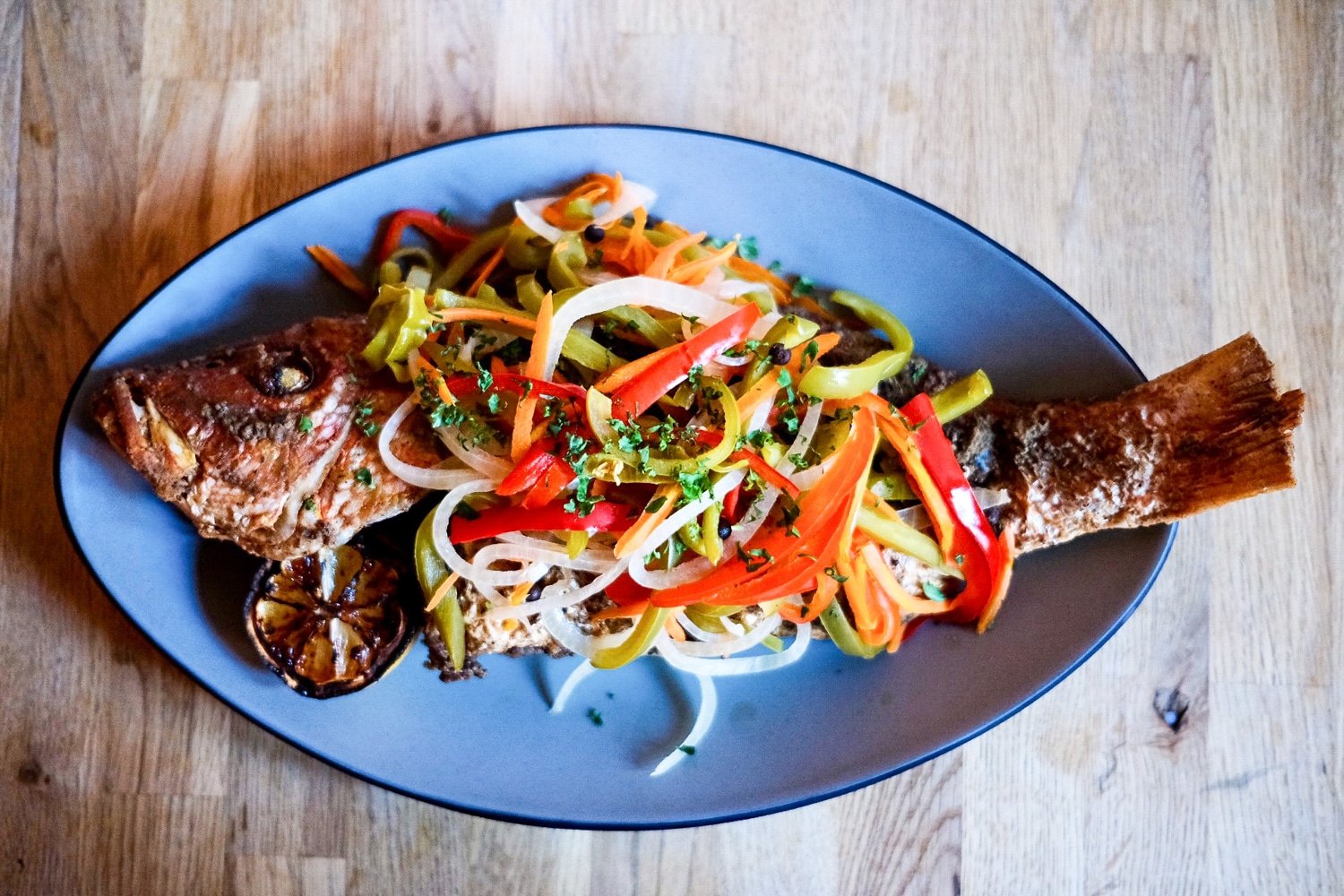How Jamaica Pickles Its Fried Fish: Wake Up To Escovitch
Kwame
Ackee and saltfish may be Jamaica's national dish, but escovitch, the country’s signature spicy marinated fried fish, most often eaten for breakfast, is certainly deserving of honorable mention. In the early 1500s, Spanish conquistadors settled on the island, and for the next couple centuries a large influx of Spanish Jews came across the ocean, bringing an unusual pickling technique called escabeche, in which fried fish is pickled in aromatized vinegar.
The Spanish had adapted the technique from the Moors, who originally prepared a dish called sikbaj, vinegar stew, made with eggplant and lamb. Along coastal Spain, the recipe came to include seafood, like sardines. Further evolving over time and travel, once escabeche reached the Caribbean, fried whole red snapper became the fish of choice and the vinegar was laced with spicy scotch bonnet peppers Here, escovitch is eaten with crunchy vegetables that are also quick-pickled in the brine.
“Jamaica adapted the dish to their own, adding peppers, onions, carrots with an abundance of spices,” says Kwame Williams, a private chef and caterer in NJ, who draws on his Jamaican heritage in modern versions of classic dishes—including escovitch. Williams says he assumes that ubiquitous cane vinegar (a byproduct of the sugar and rum industries) was probably the original pickling liquid, , but today most Jamaicans use distilled white vinegar “for a more straightforward flavor profile”.
In the early days of escovitch, Williams explains, there was no refrigeration, so this method of preservation proved incredibly useful. ”All of the fishermen who would come back to shore would fry up all the fish so it didn’t spoil,” Williams says. “And they poured pickled pepper liquid all over it to keep the bugs away.” When Williams was growing up, many families would do a fish fry on a Sunday, and then pour the hot pickling liquid over the fish the next day, assigning it as a Monday morning breakfast staple.
Williams says “Some people like to let [the escovitch pickling liquid] soak deeper into the fish [either by scoring the flesh, or just letting it steep longer],” depending on the thickness of the fish. He remembers buying foil packets of escovitch from street food vendors, and depending on the day, he’d eat it right away for a crisper fish, or save for later for one more marinated. While red snapper is the classic, Williams notes that any firm, white-fleshed fish, whole or fileted, would be a perfectly fine substitute.
Williams has a whole slew of ways he uses escovitch techniques in other applications, from pouring the pickling base over fried chicken, as the condiment in coleslaw, or to finish curry goat or oxtail stews, delivering a pop of acidity.
Negril
For Malissa Browne, managing partner at Negril BK in Brooklyn, she prefers a more restrained iteration of escovitch herself, and for her guests. Negril’s Jamaican-born chef, Father Glenn, adds just enough simple syrup to mellow the scotch bonnet’s heat, while still retaining the vinegar’s vigor. “We julienne all the vegetables, heat up the vinegar mixture, add the veggies, and add the simple at the very end — then we let it sit for a day, maybe two,” says Browne.
But when it comes to vegetables — and fish, “there definitely is a fine line — you want a little crispness, a little drizzle [of pickling liquid] over it, some people like to have it swimming in it.” At Negril, they tend to go lighter on the sauce for first time patrons, because you can always serve more on the side. It’s become so popular as a condiment/sauce really, that they even do their calamari ‘escovitch-style’. “It’s mouthwatering—vinegary, sweet, spicy—it gets the taste buds going.”


